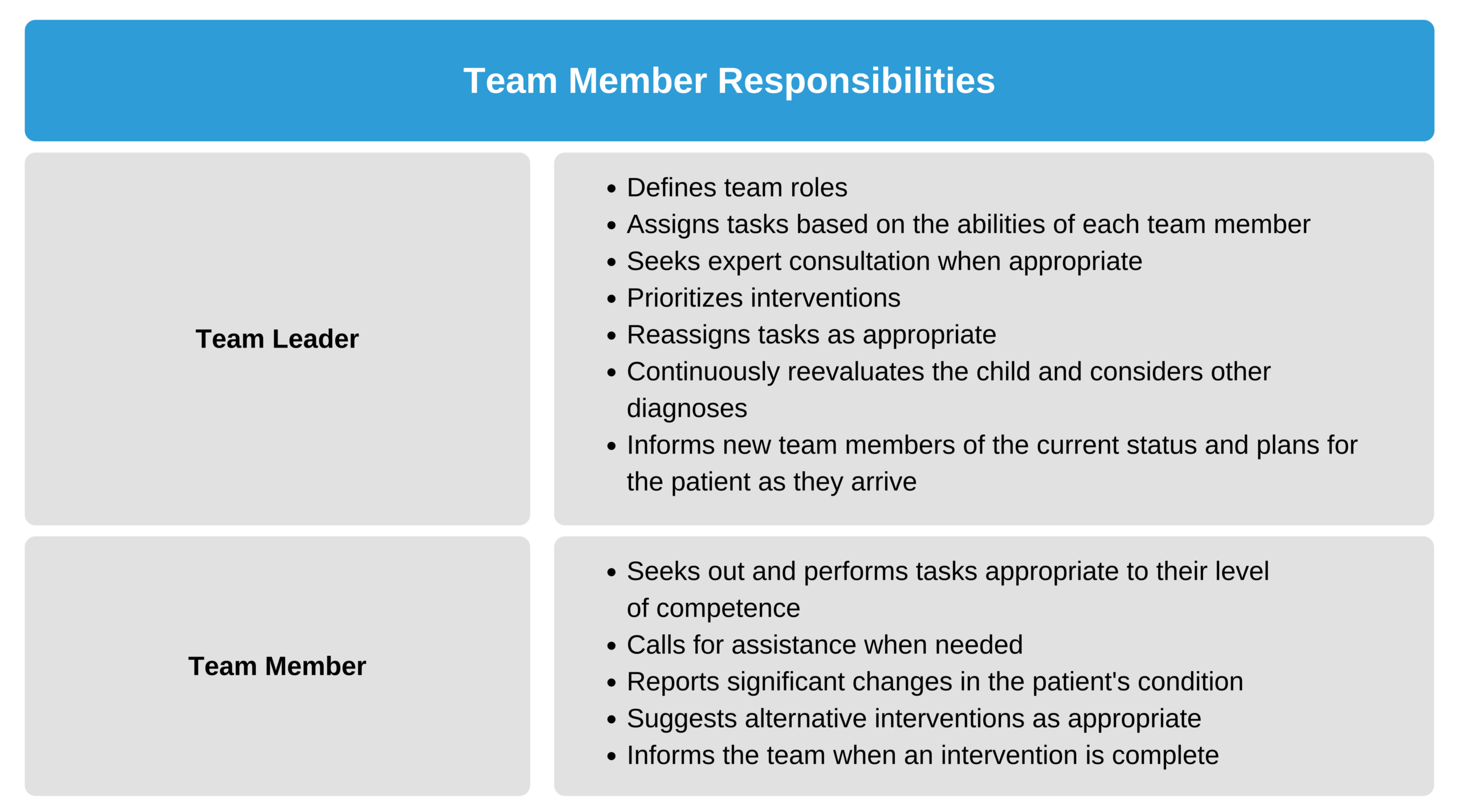The Roles of a Team
During PALS training, each student should practice performing all the different resuscitation roles and take the opportunity to act as the leader in a simulated high-performance team. In reality, team members should only perform those roles in which they are highly skilled.
A successful resuscitation relies on a team of healthcare providers who can harmoniously perform the interventions in the PALS cardiac arrest algorithm. A high-performance team divides the tasks and performs the interventions simultaneously to increase the chance of a successful cardiopulmonary resuscitation.

Pit Crew Approach
There are six suggested roles for an optimal resuscitation team: compressor, defibrillator, airway, medications, timer, and team leader.
6-Person High-Performance Team Algorithm
Team Leader
The team leader is responsible for organizing the group. The leader stands in an area that gives them a vantage point over all members of the team. The leader monitors each member and the team’s performance as a whole and makes sure the members are working harmoniously with one another. The team leader is ready to provide backup if a team member falters. The leader influences the team’s morale and should showcase the highest quality of resuscitative care and behavior.
Team Members
PALS guidelines assume that each team member is proficient within their assigned scope of practice. The facility specifies the duties and responsibilities of each role, and all members are aware of each role. The team member must practice consistently and show that they are committed to the success of the high-performance team.
Each team member must be clear about their role assignment and be ready to fulfill their responsibilities as a PALS provider. The team member must know the PALS algorithms so they can anticipate the next intervention during each resuscitation event.
If a team member is unavailable, the team leader adjusts and prioritizes the more critical roles and assigns them to team members who are present and qualified for the task. It is the responsibility of the team member to communicate if they cannot perform the assigned task.

Team Member Responsibilities
Every member of the resuscitation team is assigned a role and responsibility according to their skills and clinical role. The team leader must know the capabilities and limits of each team member. At times, six people may not be present for the resuscitation. The team leader must prioritize tasks based on their importance and the resources available.